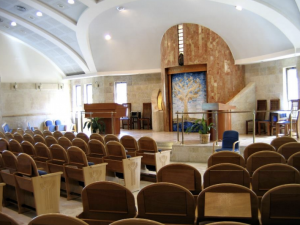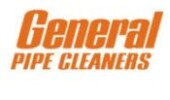
ASHRAE releases recommendations for reducing airborne infectious exposure
January 15, 2021 | By HPAC Magazine
New guidance documents include core approaches for many building types and specifically for 'communities of faith' buildings.
The ASHRAE Epidemic Task Force has released new one-page guidance document to address control of airborne infectious aerosol exposure and has also provided recommendations for communities of faith buildings.
An infectious aerosol is a suspension in air of fine particles or droplets containing pathogens such as the SARS-CoV-2 virus that can cause infections when inhaled. They can be produced by breathing, talking, sneezing and other as well as by flushing toilets and by certain medical and dental procedures.
ASHRAE’s ‘Core Recommendations for Reducing Airborne Infectious Aerosol Exposure’ concisely summarize the main points found in the detailed guidance documents produced by the ASHRAE Epidemic Task Force.
They are based on the concept that ventilation, filtration and air cleaners can be combined flexibly to achieve exposure reduction goals subject to constraints that may include comfort, energy use and costs.
“This guidance outlines a clear approach for lessening the risk of infectious aerosol exposure for building occupants that can be applied in a wide range of applications, from homes to offices to mobile environments such as vehicles and ships,” said William Bahnfleth, ASHRAE Epidemic Task Force chair. “ASHRAE’s Core Recommendations are based on an equivalent clean air supply approach that allows the effects of filters, air cleaners, and other removal mechanisms to be added together to achieve an exposure reduction target.”
Specific recommendations include the following:
Public Health Guidance
- Follow all regulatory and statutory requirements and recommendations.
Ventilation, Filtration, Air Cleaning
- Outdoor airflow rates guidance for ventilation as specified by applicable codes and standards.
- Recommendations on filters and air cleaners that achieve MERV 13 or better levels of performance.
- Air cleaners usage.
- Control options that provide desired exposure reduction while minimizing associated energy penalties.
- Air Distribution
- Promote the mixing of space air.
HVAC System Operation
- Maintain temperature and humidity design set points.
- Maintain equivalent clean air supply required for design occupancy.
- Operate systems for a time required to achieve three air changes of equivalent clean air supply.
- Limit re-entry of contaminated air.
System Commissioning
- Verify that HVAC systems are functioning as designed.
 The task force’s 18-page ‘Communities of Faith Buildings’ guidance offers recommendations on conducting worship services under epidemic conditions.
The task force’s 18-page ‘Communities of Faith Buildings’ guidance offers recommendations on conducting worship services under epidemic conditions.
“The intent of the Communities of Faith guidance is to offer those who operate and care for buildings used for worship a plan for implementing short- and long-term HVAC strategies to reduce the possibilities of transmission of the SARS-CoV2-2 virus. The document also helps communities move toward a new ‘normal’ operation after this public health emergency nears an end,” said Rick Karg, ASHRAE Epidemic Task Force member.
Recommendations for Communities of Faith include the following:
- Identify HVAC system characteristics. Compile and review operation and maintenance manuals and schedules.
- Verify HVAC systems are well maintained and operating as intended. For maintenance, follow the requirements of ASHRAE Standard 180 – 2018,
- Standard Practice for the Inspection and Maintenance of Commercial HVAC Systems.
- Consider PPE when maintaining HVAC systems including filters, coils and drain pans.
- Operate HVAC systems, if present, with system fan set to run continuously when building is occupied for services or cleaning.
- Operate the system for a time required to achieve three equivalent air changes of outdoor air (effect of outdoor air, filtration and air cleaners) before the first daily occupancy and between occupied periods, if appropriate. Three equivalent air changes can be calculated using ASHRAE’s Building Readiness Guide.
To view more ASHRAE guidance, visit ashrae.org/COVID-19.




